“A History That Cannot Be Forgotten”: Flying Tigers Delegation Visits the Memorial Hall on Victory Day
On September 3, the 79th anniversary of the victory in the Chinese People’s War of Resistance Against Japanese Aggression and the World Anti-Fascist War, the Flying Tigers delegation visited the Memorial Hall.
On August 1, 1941, the “American Volunteer Group of the Chinese Air Force” was officially established with its headquarters in Kunming, under the command of Claire Lee Chennault. Strictly speaking, the term “Flying Tigers” refers only to the American First Volunteer Group, which came to China to assist in combat from August 1941 to July 1942. However, as the war progressed and strategies evolved, the First Volunteer Group underwent several reorganizations, and “Flying Tigers” became a popular unofficial term used to refer to them. Their operations spanned nearly half of China, providing crucial support in China’s fight against Japanese aggression. It is recorded that during the U.S. military’s assistance to China, over 2,000 Flying Tigers members were killed in action, while more than 200 were rescued by the Chinese people.
In 1998, the Sino-American Aviation Heritage Foundation was established to promote Sino-American cultural exchange and deepen the American people’s understanding of this period of history, ensuring the legacy of the Flying Tigers lives on.
During their visit, the Flying Tigers delegation, led by an educational officer from the Memorial Hall, toured the Nanjing Massacre Exhibit. The delegation members solemnly examined each artifact, carefully verifying details with the educational officer. Upon seeing the tall, twisted gates of Nanjing, still bearing visible bullet holes, Jeffrey Greene, Chairman of the Sino-American Aviation Heritage Foundation, reached out to touch the scars of war on the city walls, lamenting the destruction inflicted on Nanjing.
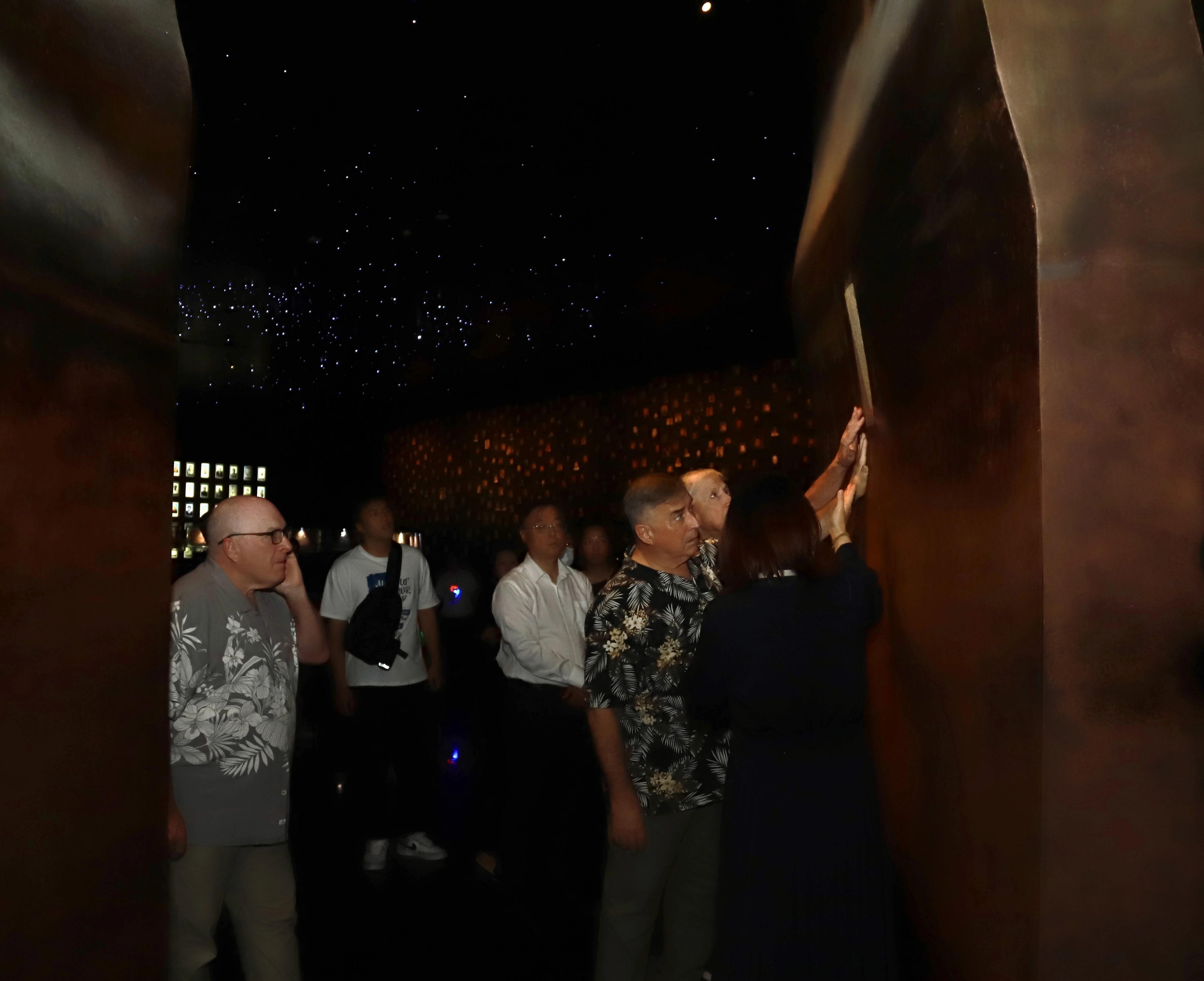
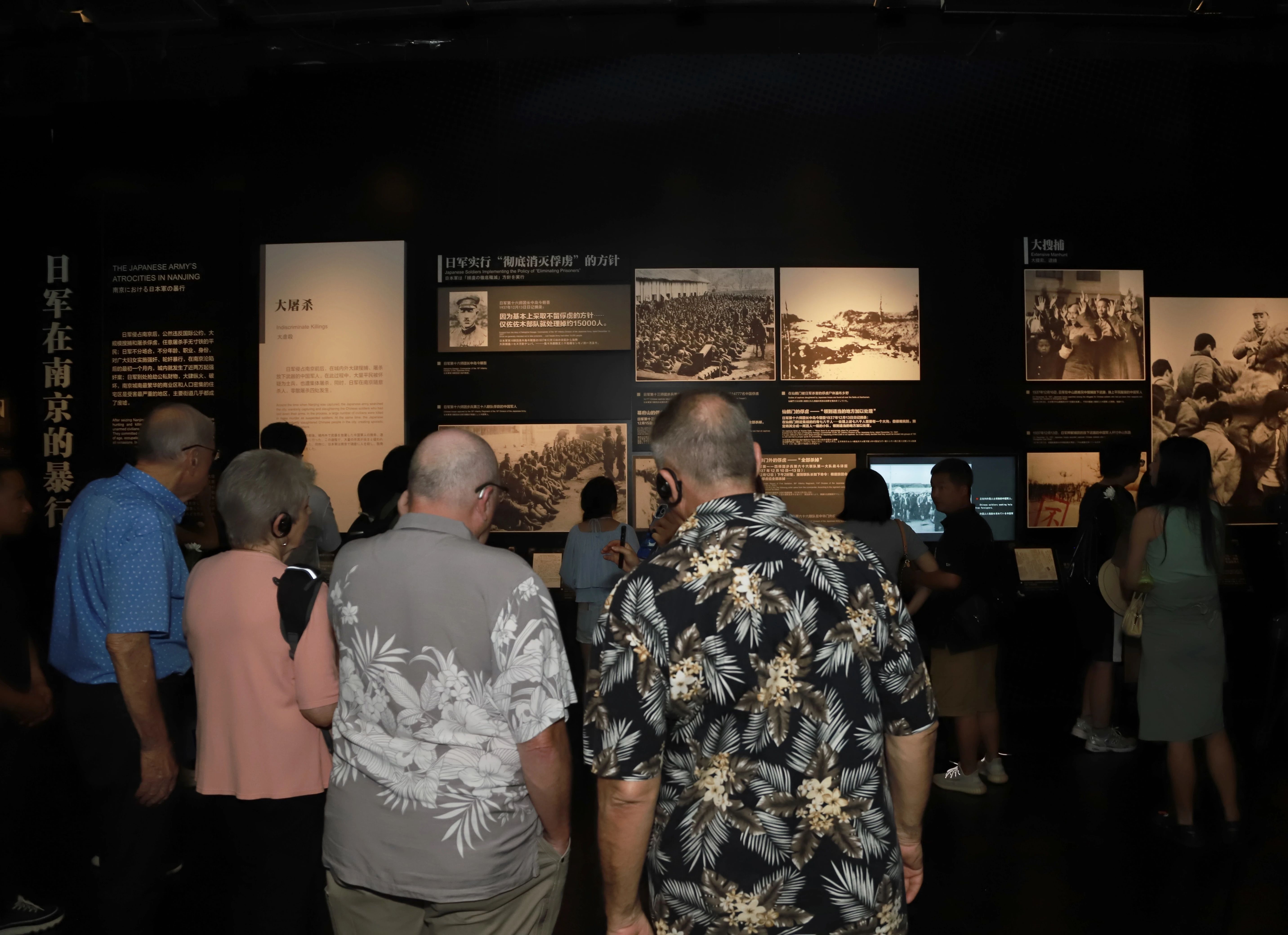
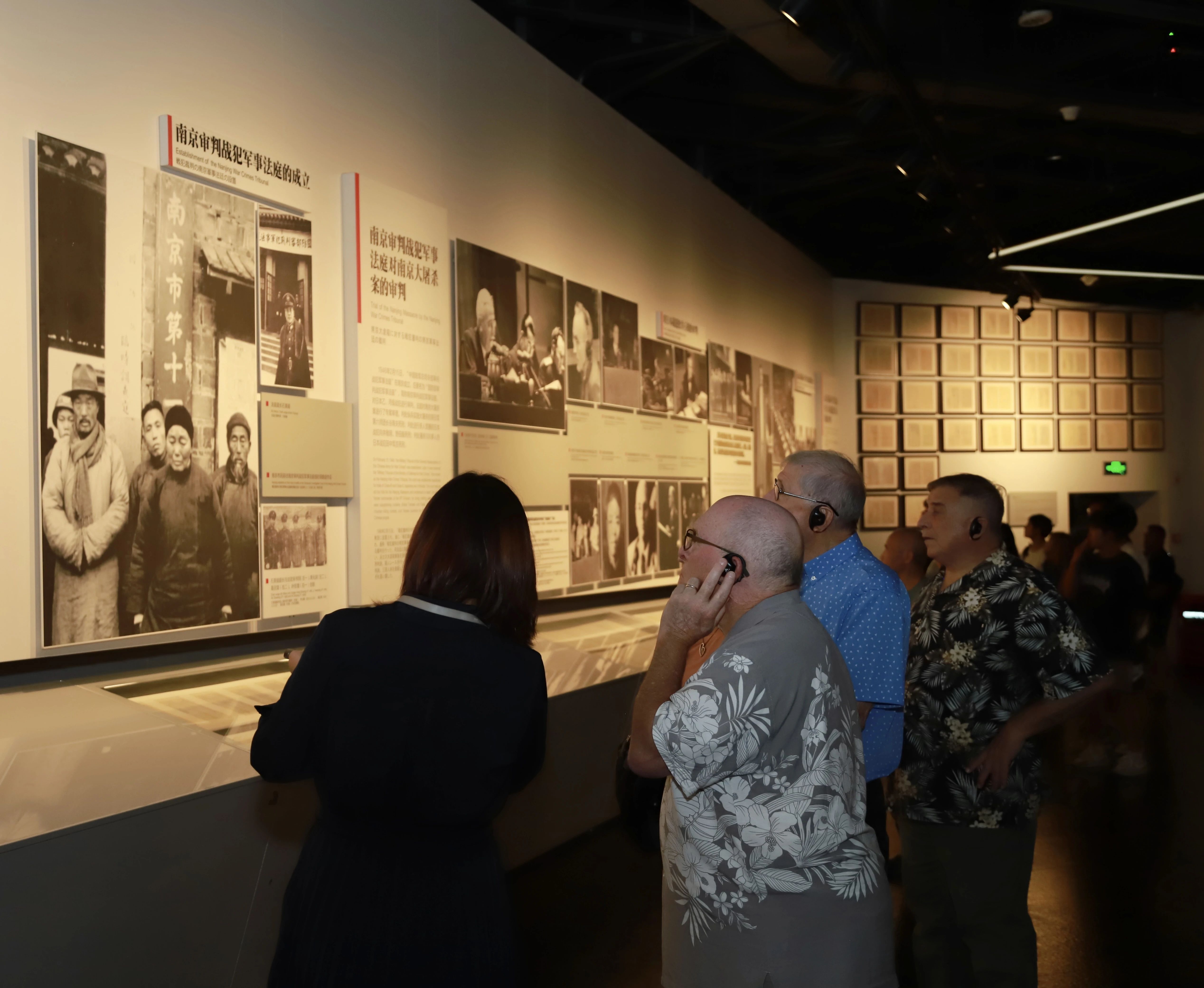
When Greene came across the exhibit about Iris Chang, he remarked: “I was a friend of Iris Chang. During the time she was writing her book, we often spoke on the phone, and she would update me on her progress. Iris was a brave person. She worked tirelessly to collect historical records of the Nanjing Massacre and was fully committed to her writing. As the exhibit points out, she faced tremendous pressure. She recorded history impartially, and made significant contributions to spreading the truth.”
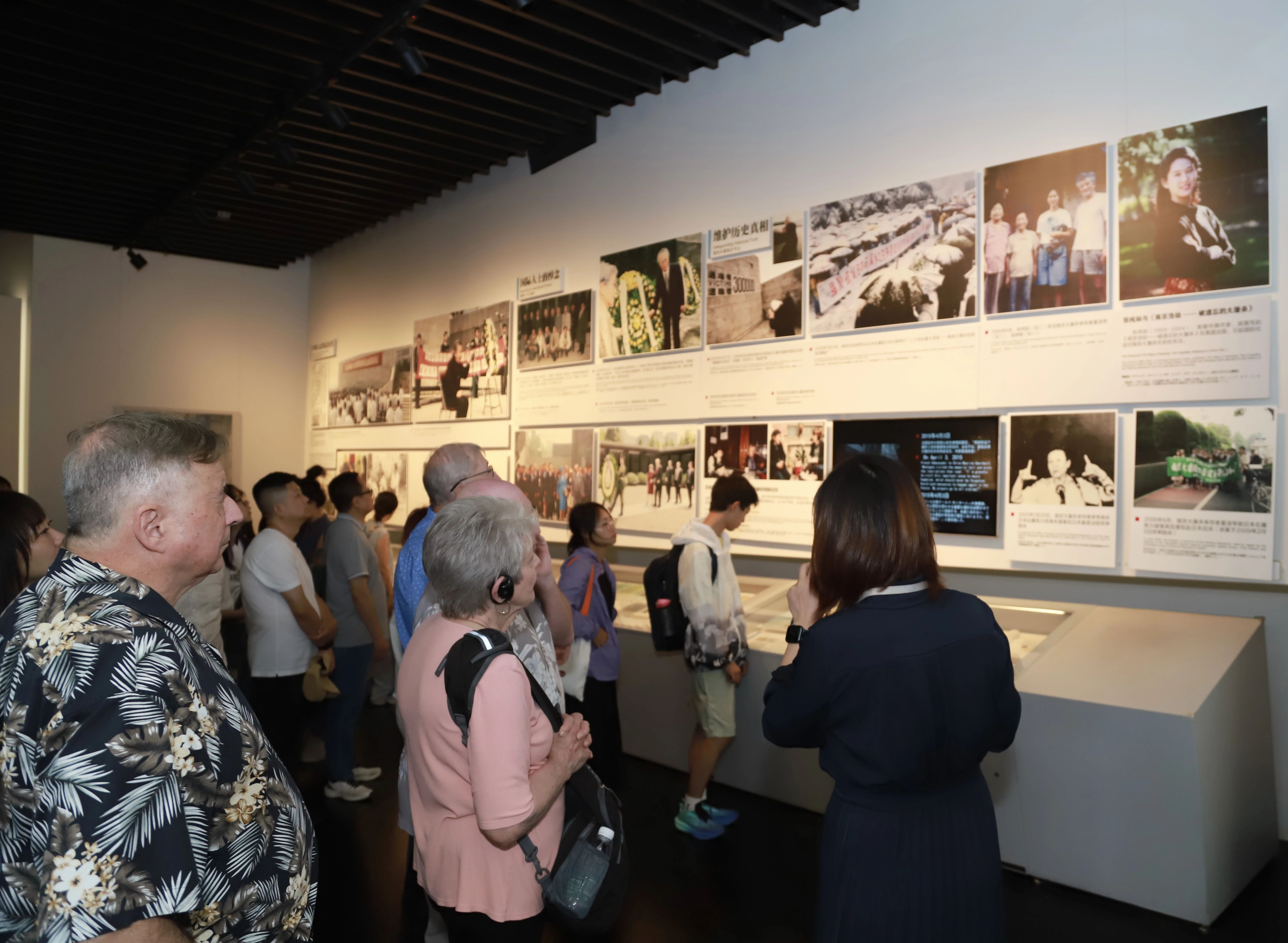
Jeffrey Greene (first from left)
The delegation then visited the “the Pit of Ten Thousand Corpses”. Margaret Mille Kincannon, Vice Chair of the Sino-American Aviation Heritage Foundation and daughter of Flying Tigers’ 14th Air Force B-25 bomber gunner James Mills, commented: “Seeing the remains of children casually discarded by the Japanese soldiers in the pit left a deep impression on me and filled me with immense sadness.”
At the Eternal Flame Memorial, the attendees laid white chrysanthemums and bowed in tribute to the victims of the Nanjing Massacre.
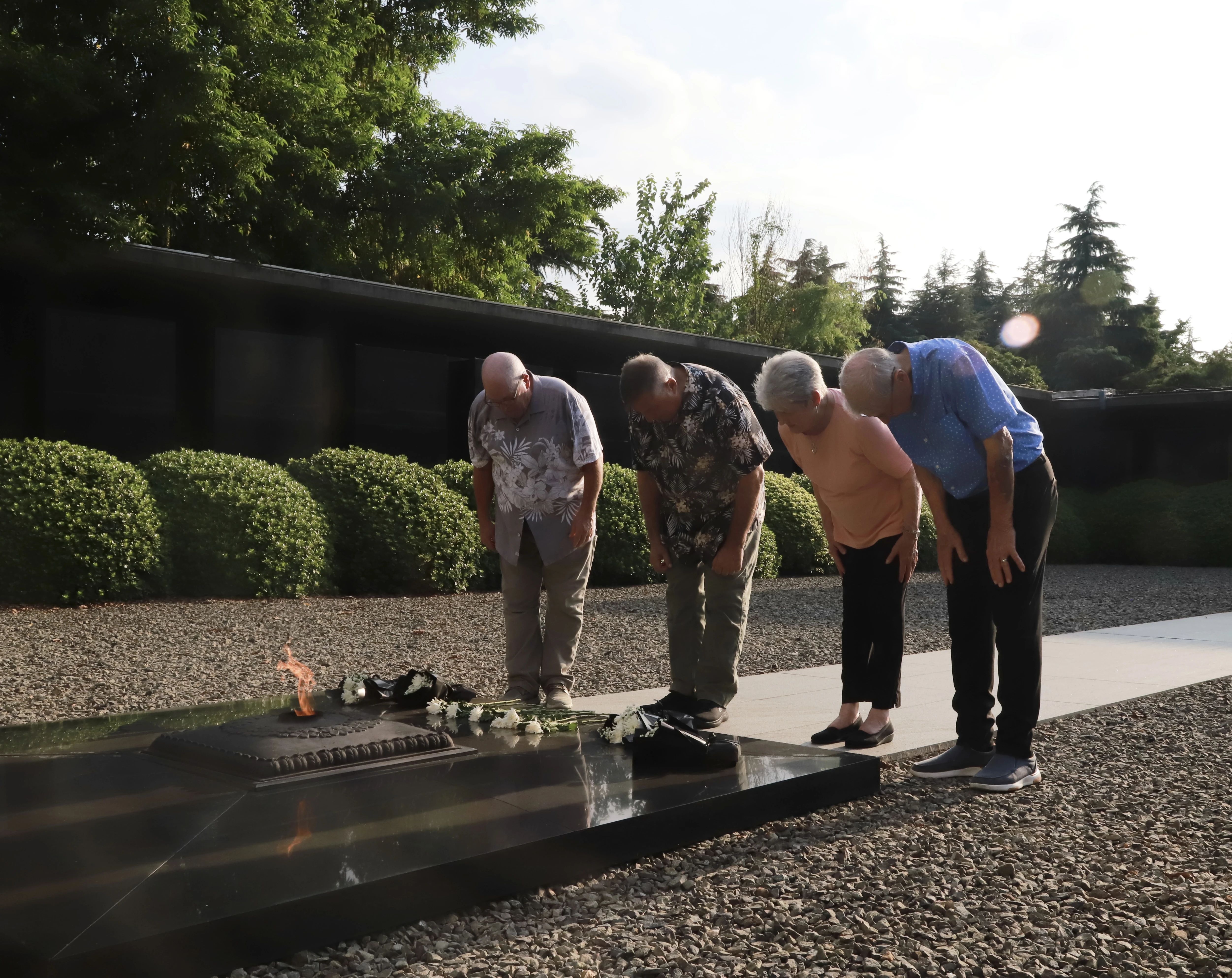
The Memorial Hall presented the Flying Tigers delegation with badges, books, and other cultural products as gifts, inviting younger generations from the U.S. to visit China, revisit history, and reflect on the past, present, and future.
After the visit, delegation members wrote down their reflections.
Clifford R Long, Vice Chairman of the Sino-American Aviation Heritage Foundation and son of a Flying Tigers 14th Air Force P-40 pilot, wrote: “What an amazing exhibit! Thank you for your diligence in building this incredible facility to honor this terrible event in history. Thank you for your hospitality.”
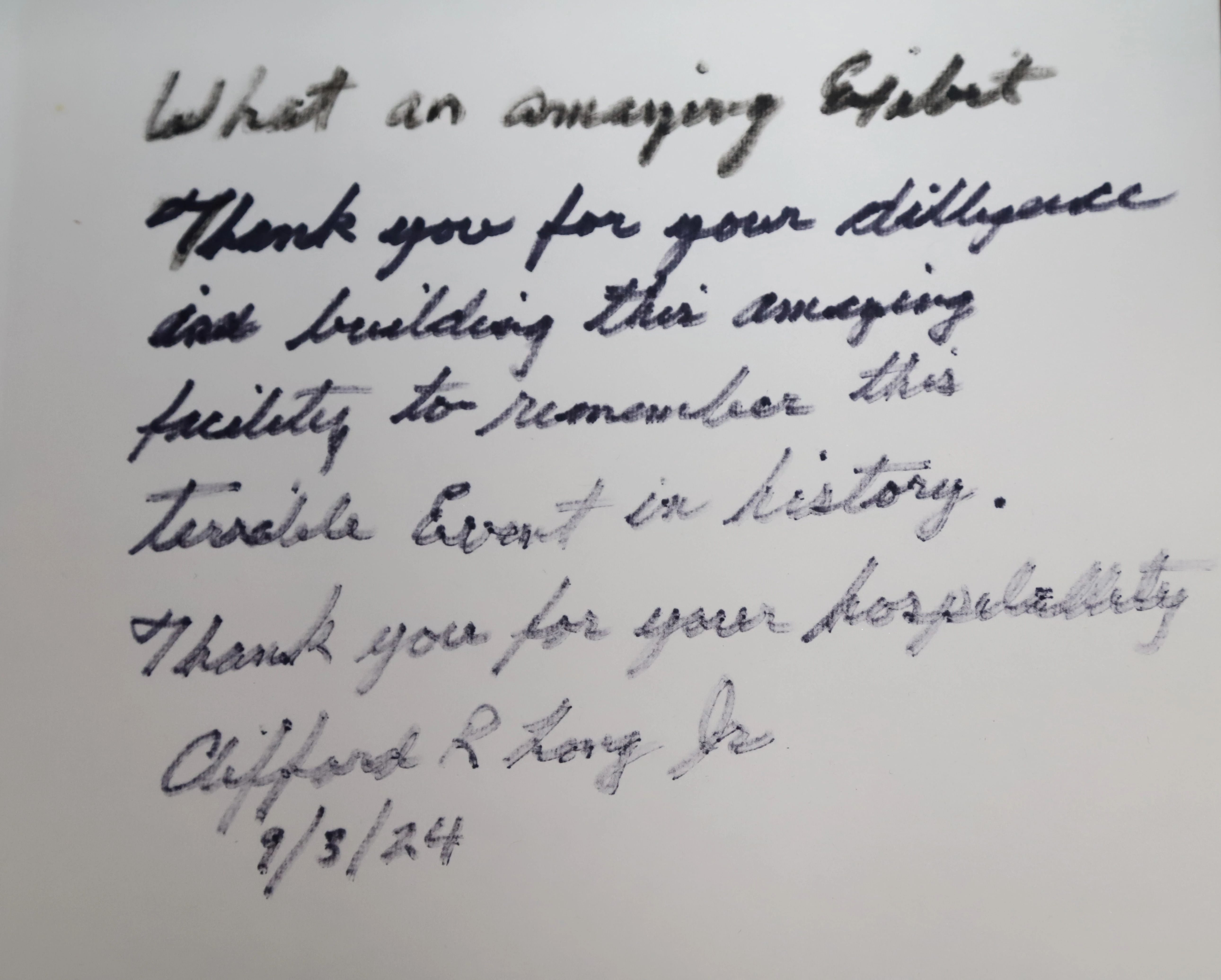
Clifford R Long’s message
Tom Kincannon, Margaret’s husband and a former U.S. Navy sailor who serves as an advisor to the Sino-American Aviation Heritage Foundation, had read reports about the Nanjing Massacre before his visit but often felt unsettled by them. He was grateful for all the efforts made by the Memorial Hall and also hoped to contribute in some way. He wrote: “It is difficult to comprehend the significance of the ‘The Rape of Nanking’ by the Japanese. My heart goes out to all survivors.” Margaret wrote: “These exhibits provide a much great understanding of “The Rape of Nanking” that I have heard about. What an impressive display of history!
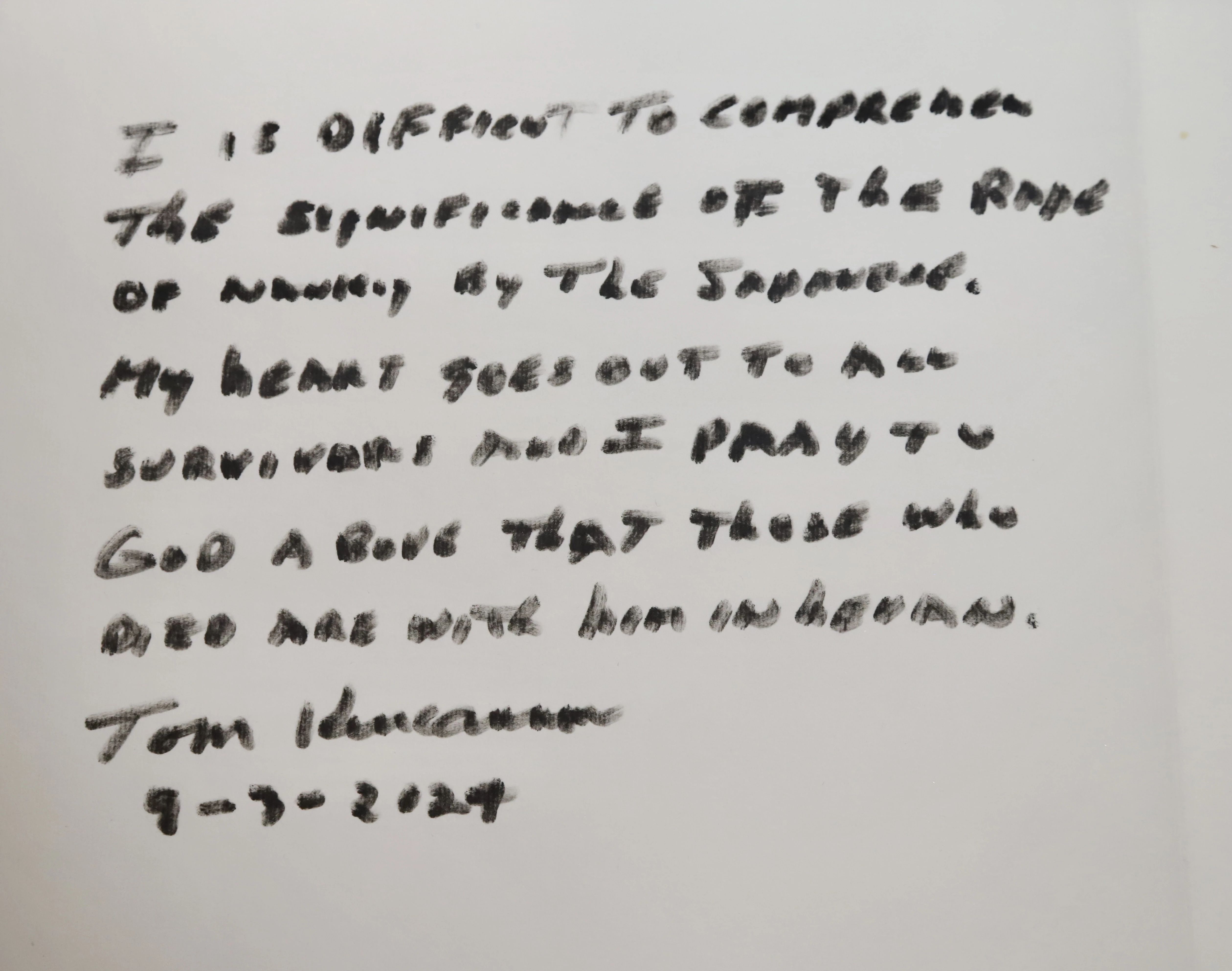
Tom Kincannon’s message
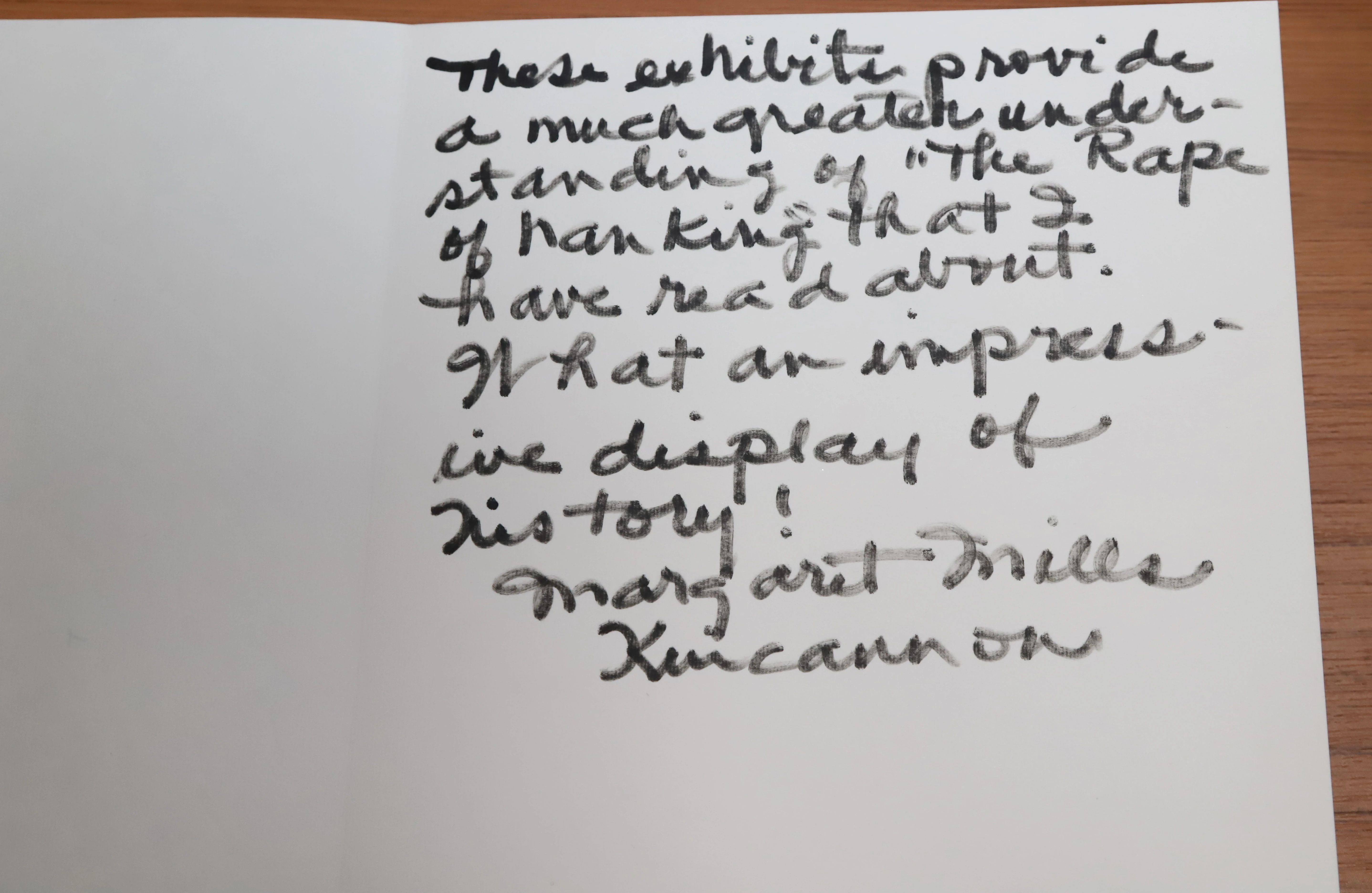
Margaret Mille Kincannon’s message
Jeffrey Greene wrote: “Such a remarkable presentation of such a difficult subject informative memorial. Telling of an important story that must be shared to each succeeding generation. (It is) a story that must not be forgotten. ”
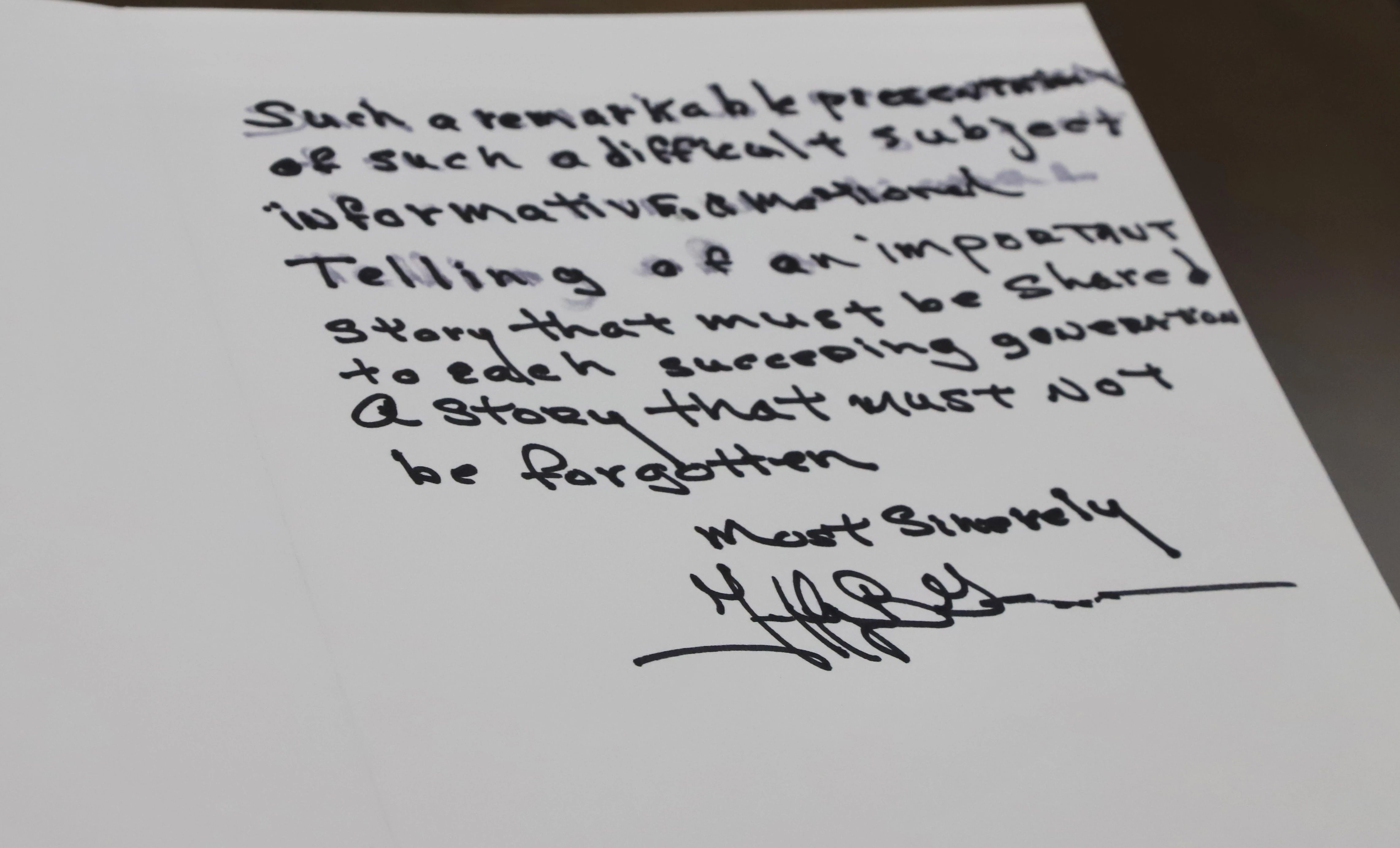
Jeffrey Greene’s message

